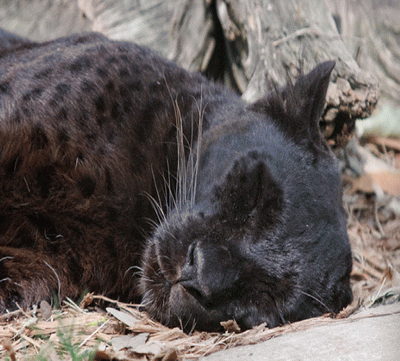The Black Leopard


Judy and the Prank ... 12
Part 1.Over the Hill and Through the Woods ... 18
Part 2. Deep Snow ... 25
One Fine Day ... 30
The Black Leopard ... 36
See Him There, the Zulu Warrior ... 44
“Paul, Why Are You All Wet?” ... 51
“And Where Did You Go Today, Dear?” ... 56
Rubber Balloons! ... 64
The Fishing Poles ... 68
The Painted Cow ... 72
Mister, Can You Spare a Dime? ... 76
No Smoking, Please ... 82
Three Strangers on a Train ... 86
The Man in the Chair in the Empty Class Room ... 92
One Good Deed Deserves Another ... 95
Travel Notes ... 99
Part 1. Requiem for a Heavyweight ... 103
Part 2. The Lay of the Bonhomme Richard ... 107
Wakey, Wakey Rise and Shine ... 109
Israel, Oh Israel ... 113
Shtoy Eto ... 116
And Wendy Has Wings to Fly ... 122
Once Around a Round Island ... 128
A Few Words to Start ... 138
The Way Things Are ... 143
One Moment in Eternities Waste... 147
Part 1. Snow and Slush ... 150
Part 2. Flood and the Road ... 154
A Letter from Nigeria ... 156
The Road to Stone Hill... 162

I was finishing recording the last satellite pass when Bob came in my work room and reminded me that I had promised to help him launch the next met balloon. I hurriedly saved my work and went through the swaying ship’s passageway to the Wet Lab near the stern.
It was not an easy walk and once inside the lab I heard the outside wash of the sea thunder along the ship’s side. Bob, holding the line that would attach his instruments to the balloon, smiled at the noise.
“You’ll need to get your survival suit on, it’s rough out there. They’re turning the ship into the wind so it’ll be easier to get the balloon off, but it’ll still be bad and ice is starting to accumulate on the deck. We’ll fill the balloon up partially in here and then take it outside to fill it the rest of the way. That’s when I’ll need you to attach the instrument package.
As if to accentuate his words, the bulkhead rang like a bell as a particularly vicious wave hit the side of the ship. In front of me, Bob’s coworker had turned on the helium and the balloon began to expand. Putting on my suit did not take long, I was used to it’s cumbersome fittings and Bob, holding the partially filled balloon, opened the door and waved for me to follow him.
I grabbed the instrument package and soon I was beside him standing outside in the lee created by the ship. Despite the shelter of the ship’s mass, the sea around us was a maelstrom of foam and noise. It was late dusk, almost night. Bob’s attention was focused solely on the balloon as it expanded more and more. From long experience, his feet moved instinctively to correct for the swaying deck. Finally, he waved me to him. As I moved forward, I noted that ice had indeed formed near the railing; it was not easy moving. We grabbed each other for mutual support as I attached the instrument package.
Bob looked around, waiting, and then in the small moment of a short lull, moved to the railing and released the balloon. Quickly stepping back, he joined me as we watched the large balloon skitter along, moving about ten feet from the sea’s surface and then, just as a large wave seemed about to engulf it, it rose quickly and in seconds was lost in the black sky.
Bob turned and started twisting the wheel hatch to open the door. As he did this, I looked out over the dark sea. Two fishing boats were working about a mile from us. Each had a tremendously bright halogen light directed on the water evidently to attract their prey. It seemed incredible that they could work in such a wild sea.
Bob yelled something at me and I went inside and he secured the door.
I began removing my survival suit as I watched Bob standing close to the instrument’s data receiver. He had not taken the time to remove his suit. I waited; then when it was evident that everything was going well, I turned and began to leave. Bob hearing me open the door turned and gave me a brief wave of thanks.
If anything, the passageway was even more alive than before. The ship had turned back to resume its original course and, from the swaying of the passageway, the movement through the sea had gotten worse, much worse. From years at sea, I was well experienced with these type conditions. We were in the northern part of the Japanese Sea and it was February. For this place and for this time of the year, conditions were normal, but, as I made my way back to my work station with the deck heaving below me, I longed for my Mississippi home.
As I got to my room, I stopped. A woman’s soprano’s voice was coming from further forward in the passageway. She was singing the aria, Un bel di (One fine day) from Puccini’s Madame Butterfly.
It was a recording of course and, but an incredibly beautiful recording. What was really enhancing the aria were the walls of the passageway; they made a natural wonderful channel for her voice. It was as if she was right beside me as she sang the words of the young Japanese girl’s words of hopeless love.
Madame Butterfly sings that one fine day she will see a puff of smoke on the far horizon and then, from where she stands in front of her house high on the hill, she will see her American lover’s ship enter the harbor. And she sings that here she will be waiting for him to come up the hill and hold her in his arms.
The soprano’s voice and the accompanying music are breathtaking; overcoming the voice of the winter sea’s hammering of the ship’s sides. It was as if the outer noise and the very violent swaying of the passage didn’t exist; just the hopeless words of Madame Butterfly. You know that what she sings will not happen; that the American Naval lieutenant will indeed come, but there will not be the idolized reunion she sings, only tragedy.
But for the moment there is only Puccini’s wonderful song, its music and the soprano’s crystal clear voice singing one of the most beautiful arias in all of opera. I stand listening; my hand on the door’s latch and then it is over.
The sense of the ship’s movement through the rough sea returns and the walls now clamor with noise generated by the violent sea.
I turned and looked down the passageway to a room whose door was open and from where the music had come. I let go of the door to my work area and made my way to the open door. The room belonged to the ship’s chief engineer and, as I came into the door’s opening, he looked up from his CD player and smiled.
“You heard it, eh? That woman is good and the rest of the CD has her singing selections from other operas. But this, this is the best of them all. On days like this, I play it and listen and all this goes away.” He gestured to the heaving ship around us.
“Would you like to hear it again?”
I hesitated a second and, when he pointed to what looked like a comfortable chair that had been tied to the wall, I came in and sat down. He fiddled with the player for a moment and then we both sat and listened to Madame Butterfly sing once more of a hopeless love of a time long ago.

For more than thirty-five years, Paul Estronza La Violette has explored the world’s oceans to find the secrets of its currents and physical properties. In doing so he has experienced adventures that often have kittle to do with his research.
In this book he writes about breaking down on a deserted road in Africa and meeting a wild black leopard; finding a skier trapped in a snow cave; hearing Madam Butterfly sung while in a fierce winter gale in the northern most Japan Sea; flying over the North Pole at a thousand feet on three times in the dead of winter.
These stories and more have made a life’s more rewarding than a job couples to an 8 to 5 schedule. His wife, Stella, has gone with him on some of these adventures and made his life’s work more enjoyable than if she had stayed home.
You will enjoy these stories and read about parts of the world that few people know.
